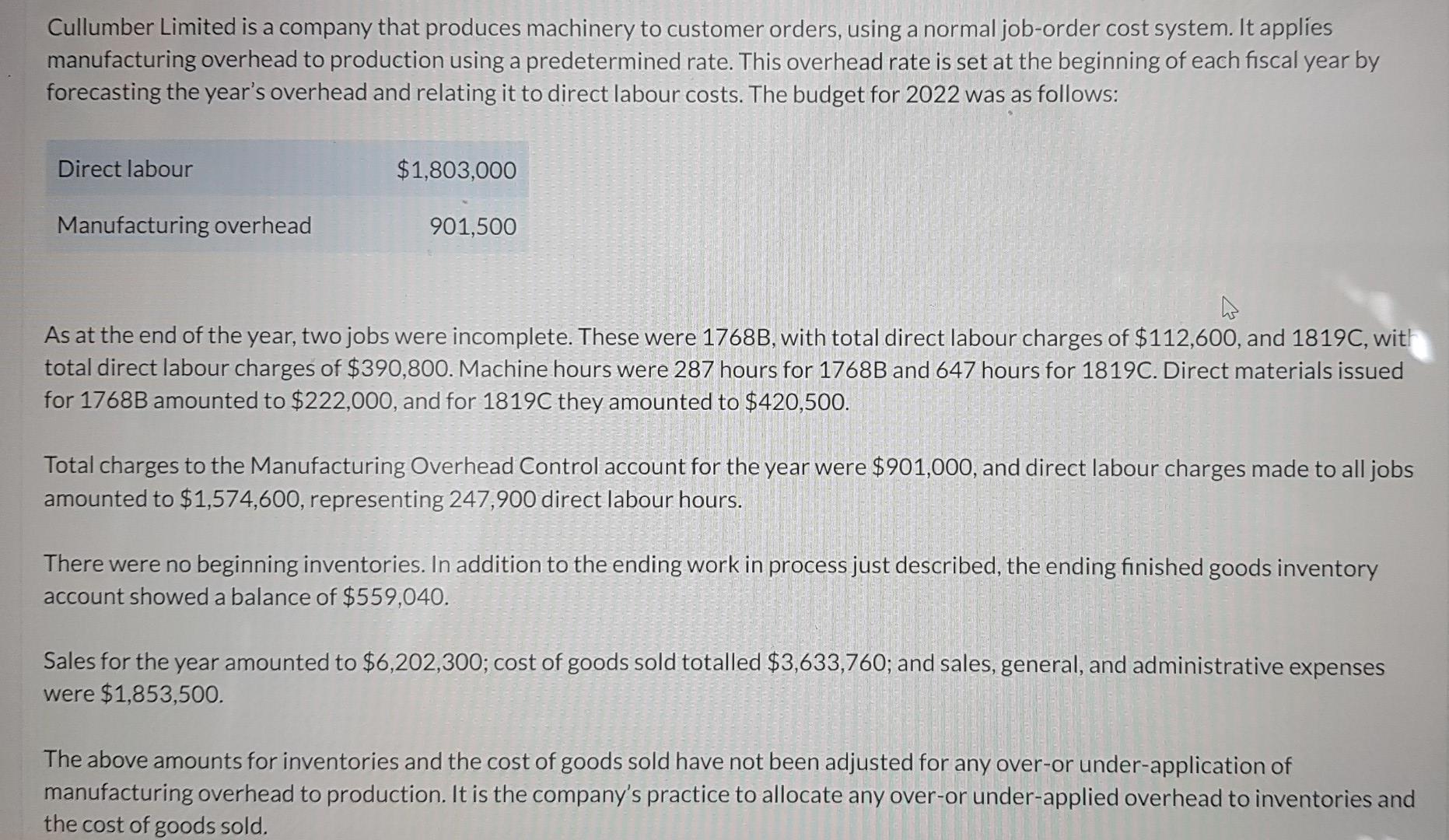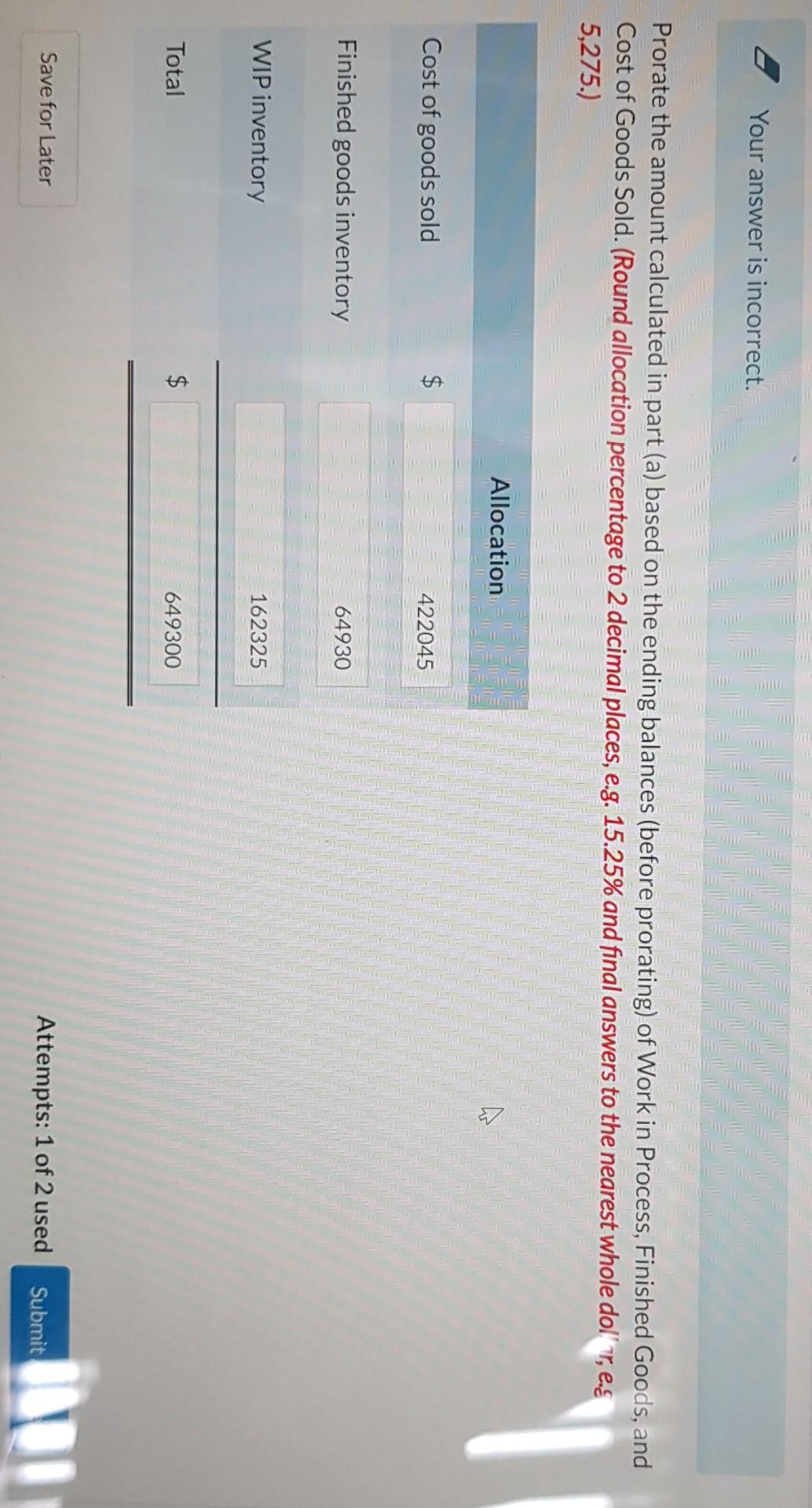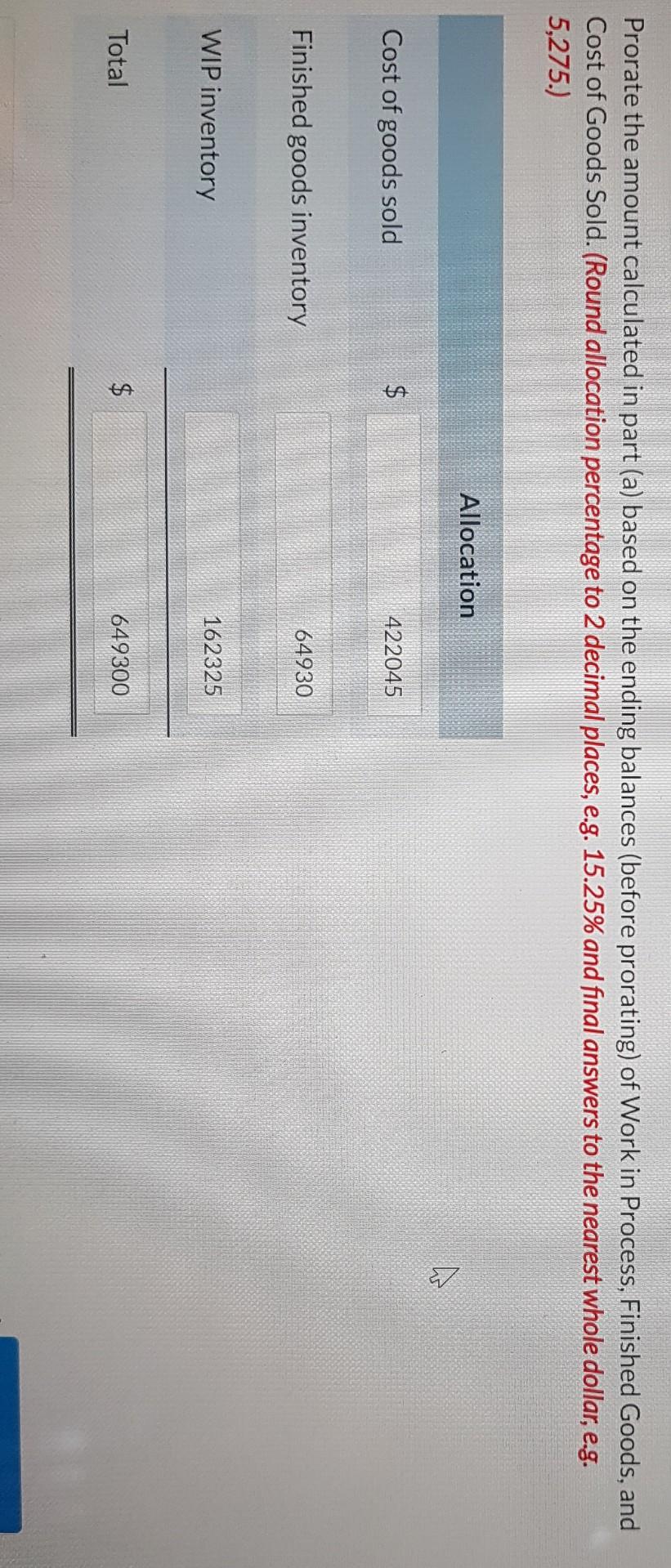Answered step by step
Verified Expert Solution
Question
1 Approved Answer
I'm not sure about my answer Cullumber Limited is a company that produces machinery to customer orders, using a normal job-order cost system. It applies


I'm not sure about my answer

Cullumber Limited is a company that produces machinery to customer orders, using a normal job-order cost system. It applies manufacturing overhead to production using a predetermined rate. This overhead rate is set at the beginning of each fiscal year by forecasting the year's overhead and relating it to direct labour costs. The budget for 2022 was as follows: Direct labour $1,803,000 Manufacturing overhead 901,500 A As at the end of the year, two jobs were incomplete. These were 1768B, with total direct labour charges of $112,600, and 1819C, wit! total direct labour charges of $390,800. Machine hours were 287 hours for 1768B and 647 hours for 1819C. Direct materials issued for 1768B amounted to $222,000, and for 1819C they amounted to $420,500. Total charges to the Manufacturing Overhead Control account for the year were $901,000, and direct labour charges made to all jobs amounted to $1,574,600, representing 247,900 direct labour hours. There were no beginning inventories. In addition to the ending work in process just described, the ending finished goods inventory account showed a balance of $559,040. Sales for the year amounted to $6,202,300; cost of goods sold totalled $3,633,760; and sales, general, and administrative expenses were $1,853,500. The above amounts for inventories and the cost of goods sold have not been adjusted for any over-or under-application of manufacturing overhead to production. It is the company's practice to allocate any over-or under-applied overhead to inventories and the cost of goods sold. Your answer is incorrect. Prorate the amount calculated in part (a) based on the ending balances (before prorating) of Work in Process, Finished Goods, and Cost of Goods Sold. (Round allocation percentage to 2 decimal places, e.g. 15.25% and final answers to the nearest whole dol' re. 5,275.) Allocation his Cost of goods sold ta $ 422045 Finished goods inventory 64930 WIP inventory 162325 Total $ 649300 Save for Later Attempts: 1 of 2 used Submit Prorate the amount calculated in part (a) based on the ending balances (before prorating) of Work in Process, Finished Goods, and Cost of Goods Sold. (Round allocation percentage to 2 decimal places, e.g. 15.25% and final answers to the nearest whole dollar, e.g. 5,275.) Allocation 4 Cost of goods sold $ 422045 Finished goods inventory 64930 WIP inventory 162325 Total $ 649300
Step by Step Solution
There are 3 Steps involved in it
Step: 1

Get Instant Access to Expert-Tailored Solutions
See step-by-step solutions with expert insights and AI powered tools for academic success
Step: 2

Step: 3

Ace Your Homework with AI
Get the answers you need in no time with our AI-driven, step-by-step assistance
Get Started


